#MAXXI Museum
Explore tagged Tumblr posts
Text

Architectural Photography
By Francesca Pompei.
Interiors of the MAXXI Museum built by Zaha Hadid Architects in Rome, Italy with date 2009.
#francesca pompei#photographer#architectural photography#interior architecture#zaha hadid architects#rome#italy#maxxi museum
0 notes
Text

MAXXI foundation, Roma
60 notes
·
View notes
Text

little boy
76 notes
·
View notes
Text

Fridtjof Nansen, In northern mists: Arctic exploration in early times, 1911 (cover image of volume 2) VS Zaha Hadid, MAXXI: Museum of XXI Century Arts, Rome, Italy, 1998-2009 ph. Simone Cecchetti
#Fridtjof Nansen#aurora borealis#aurora#Arctic#arctic exploration#zaha hadid#zaha hadid architects#maxxi#roma#rome#Museum of XXI Century Arts#contemporary architecture#museum#contemporary museum
45 notes
·
View notes
Text
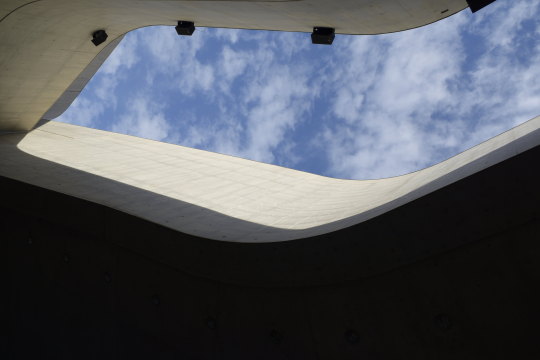

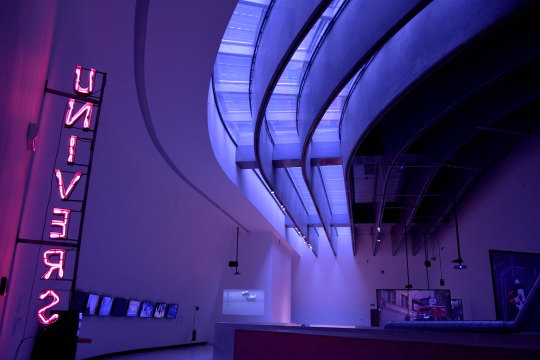
Museo Maxxi Roma, 2018
19 notes
·
View notes
Text
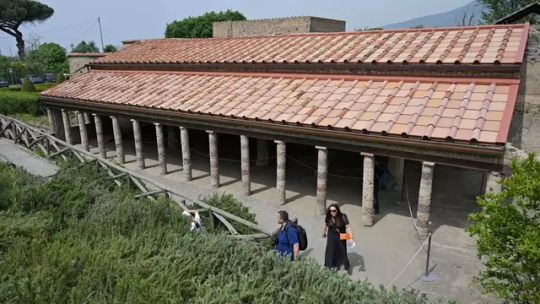
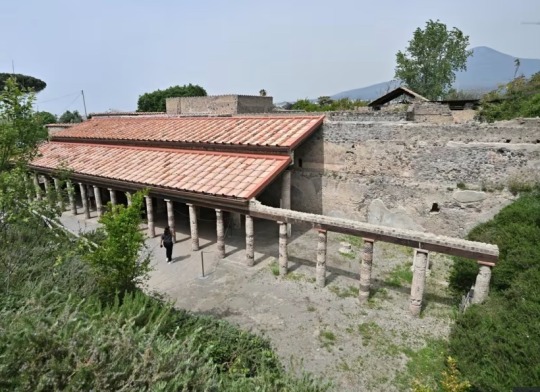
‘Ancient Roman’ Solar Roof Tiles Power Pompeii Villa
Ancient Roman ruins at Pompeii have been fitted with invisible solar panels, in a move that will contribute to the archaeological site’s sustainability efforts and cut costs. The innovative panels, which blend into the background by imitating traditional materials, were installed on the House of Cerere, on a thermopolium — a Roman snack bar — and on the House of the Vettii, which recently reopened following 20 years of restoration work.
“They look exactly like the terracotta tiles used by the Romans, but they produce the electricity that we need to light the frescoes,” said Gabriel Zuchtriegel, the director of the archaeological park of Pompeii, in a press release.
Each year, 3.5 million tourists explore the vast ruins of the ancient Roman city, which was buried by the eruption of Mount Vesuvius in 79 AD. But due to Pompeii’s size, energy bills are expensive and conventional methods of providing power across the site can threaten its appearance.

“Pompeii is an ancient city which in some spots is fully preserved,” Zuchtriegel said. “Since we needed an extensive lighting system, we could either keep consuming energy, leaving poles and cables around and disfiguring the landscape, or choose to respect it and save millions of euros.” The new technology will help the archaeological site to cut energy bills and make it more enjoyable, he added.
The invisible solar panels — or “traditional PV tiles” as they are technically known — were created by the Italian company Dyaqua. They can be designed to appear like stone, wood, concrete or brick, and hidden on walls, floors and roofs, according to Elisabetta Quagliato, whose family owns Dyaqua, in the press statement.
“We are an archaeological site but we also want to be a real-life lab for sustainability and the valorization of intangible heritage,” Zuchtriegel said. “Our initiative is not merely symbolic. Through the million tourists who visit us every year, we want to send a message to the world: cultural heritage can be managed differently and in a more sustainable way.”
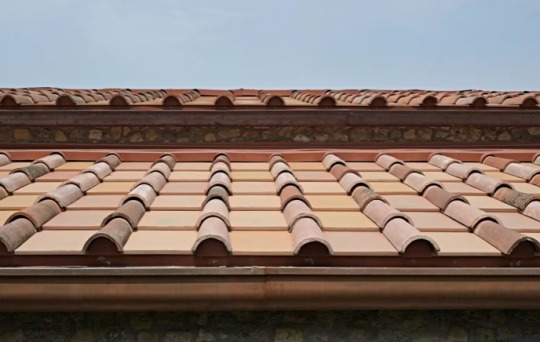

Other locations in Italy using the invisible solar technology are the commune of Vicoforte in Italy and, soon, Rome’s contemporary art museum Maxxi. Public buildings in Evora, Portugal, and Split, Croatia will also install the panels, according to the press statement.
Pompeii’s recent use of these panels is just the beginning, Zuchtriegel said. “From now on, we will be taking this solution into account for all future renovation and restoration projects.”
By Garry Shaw.
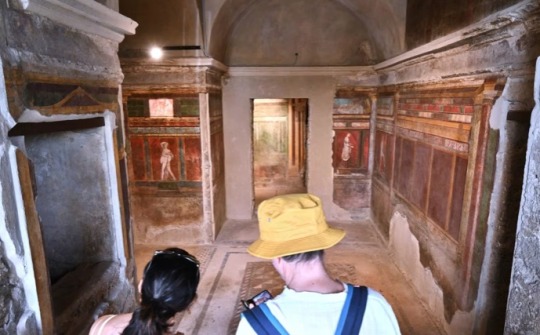
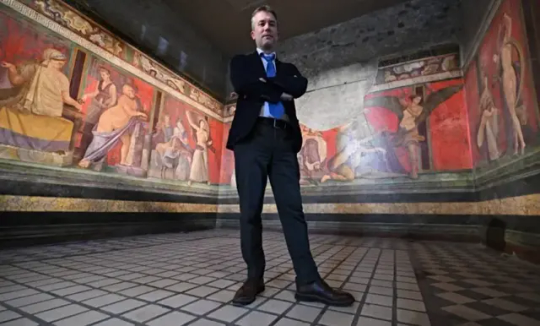
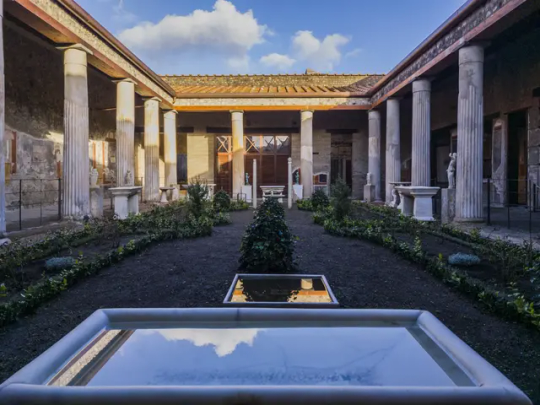
#‘Ancient Roman’ Solar Roof Tiles Power Pompeii Villa#House of Cerere#House of the Vettii#thermopolium#terracotta tiles#solar power#frescoes#mount vesuvius#ancient artifacts#archeology#archeolgst#history#history news#ancient history#ancient culture#ancient civilizations#roman history#roman empire#roman art
285 notes
·
View notes
Text
When Italian Culture Minister Gennaro Sangiuliano resigned over a sex scandal on Sept. 6, Alessandro Giuli was appointed in his place. Giuli had very little experience in politics, but like Prime Minister Giorgia Meloni, in his youth, he was a member of a neofascist party called the Italian Social Movement. Soon after her election, Meloni appointed him as the director of MAXXI, an important museum in Rome.
In a way, Giuli was part of Meloni’s vision years before she appointed him as a minister. She has long considered him one of the most suitable candidates to carry out a project that she cares about: building right-wing cultural hegemony.
Cultural hegemony is a concept developed by Italian communist philosopher Antonio Gramsci to explain why the worker’s revolution that Karl Marx predicted had not yet happened. He theorized that it was because the ruling class controlled social institutions—from schools to the media—and used them to spread its ideologies, shaping the population’s belief system and, thus, its actions. In other words, controlling culture meant controlling political and social outcomes.
Meloni is not a communist, but she is convinced that the Italian left has succeeded, since the end of World War II, in dominating cultural institutions, such as the arts and academia, creating a situation which she has described as “power hegemony” against the right. Now that she’s in power, she’s determined to reverse that imbalance.
Giuli couldn’t agree more—and he’s turning to Gramsci for a road map. In a book that he published in May, aptly titled “Gramsci è vivo” (Gramsci Lives), he outlined his vision: “Today, especially on the right, there’s the mother of all battles: shifting from a mentality of exclusion toward a mentality of System, which means perceiving oneself as a ruling class with a vision, a perspective of society.”
What he was trying to argue in the book is that the right, which until recently was excluded by polite society in general—and more specifically, in the realm of culture—must embrace Gramsci’s vision of cultural hegemony. In other words, to become a true ruling class, you cannot rely on political power alone; you need to establish a dominant narrative to maintain consensus through a system of shared values and take hold of cultural institutions, something that the left has traditionally been better at.
The Italian right’s fascination with Gramsci is not an isolated case: Other European right-wing groups have taken inspiration from the communist philosopher as well. Martin Sellner, an Austrian who is a prominent figure among the German-speaking far right, cited Gramsci in his book Regime Change from the Right: A Strategic Sketch. Among the right-wing admirers of Gramsci outside of Europe, there are former White House strategist Steve Bannon and Olavo de Carvalho, a Brazilian conservative ideologue who died in 2022.
But what sets Meloni apart is that she has both the vision and the power to make it happen.
The first right-wing thinker to appropriate the communist philosopher was the French philosopher Alain de Benoist, who did so in the mid-1970s. According to Francesco Germinario, a historian at the Luigi Micheletti Foundation who specializes in researching the far right, de Benoist decontextualized Gramsci and stripped him of his Marxism, focusing solely on the idea of cultural hegemony and the importance of winning battles on the cultural front to gain power.
This reinterpretation is particularly successful in postwar Italy, where the right—still licking its wounds—found itself marginalized and embraced a defensive, victim mentality: “Since the postwar period, the right has mainly tried to defend itself,” Germinario said.
Then, when Italy’s left underwent an identity crisis after the fall of the Soviet Union, the right found itself in the position to counterattack, but it hadn’t developed the intellectual ammunition. And so, “Lacking its own points of references, the right looked for cultural inspiration from the left,” Germinario added.
To be fair, the perception that the left ever exercised total cultural hegemony in Italy is mostly false. The Christian Democrats, the centrist but socially conservative Catholic party that ruled the country between 1948 and 1992, did hold a strong grip on some cultural institutions, especially schools and television. And the Communist Party maintained a strong influence on book publishing and cinema.
Yet at the same time, right-wing politician Silvio Berlusconi, who ruled as prime minister on and off between 1994 and 2011, notoriously enjoyed a quasi-monopoly over television. Even so, he did not exercise his power on other cultural realms, despite the fact that he owned two major book publishing houses (one of which, Einaudi, leans strongly to the left).
Berlusconi wasn’t interested in high-brow culture and never made a secret of it: “He had an utilitarian conception of culture—he understood ahead of his times the crisis of newspapers and of a world of intellectuals linked to newspapers,” said Giorgio Caravale, professor of modern history at Roma Tre University and the author of the book Senza Intellettuali (Without Intellectuals). “To Berlusconi, it was all about TV,” Caravale added. “He cared more about what showmen were saying in front of the camera than about hundreds of op-eds in newspapers.”
In Italy, television has a central role. After World War II, it contributed to the country’s literacy and spreading Italian (as opposed to regional dialects) as a shared language. Italy has an older population that mostly relies on TV as its main source of information and entertainment. Newspaper and book readership is low, compared to other highly developed nations.
Meloni’s right has a different approach. “When she came to power, she thought: We must do what Berlusconi has not done in 20 years: Invest in culture and take it back from the left,” Caravale said. When she became prime minister in 2022, she allocated most of the cultural positions to trusted people, many of whom had a past in the Italian Social Movement (MSI).
Giuli’s predecessor, Sangiuliano, also came from the MSI. In an interview with the New York Review of Books, he also expressed his intention to overturn what he perceived as a cultural hegemony of the left, saying, “The radical-chic spirit of certain Roman salons tried to transform culture in Italy into something that spoke only to a small circle.” Sangiuliano added that he hoped to give “the national cultural panorama a wider horizon.”
Sangiuliano made a point of weaponizing literature. He has tried to reinterpret Dante Alighieri as an icon of the Italian right and produced a much publicized exhibit in Rome dedicated to J. R. R. Tolkien, an author particularly beloved by the post-fascist right in Italy. (Between the 1970s and 1990s, the MSI hosted youth camps called “Campo Hobbit”). He also relished announcing the planned creation of new museums, such as a museum of the Italian language, a museum of the Italian culture, and a “museum of the foibe,” to remember the war crimes of Yugoslav partisans during World War II. None of the museums has actually been built.
Meloni has also appointed another former MSI member, Pietrangelo Buttafuoco, to be the president of the Biennale di Venezia—the influential institution that oversees Venice’s glamorous film festival as well as the city’s renowned architecture and art festivals. Buttafuoco is a famous journalist and novelist who is well known for his ultraconservative views.
Meloni’s government has been particularly active in shaping the culture of Italy’s state TV network, or RAI, to the point that in the past few years, it has been dubbed by critics as “Tele-Meloni.” The effort is more aggressive than in Berlusconi’s era and, despite her success, Meloni seems scared that someone might speak badly of her. As a result, the bad news is often censored and the good news celebrated—even if it’s only a pro-Meloni headline in a foreign newspaper.
RAI’s general director, Giampaolo Rossi, is also a former MSI activist, hailing from the same party chapter where Meloni started her political career as a teenager in the Roman neighborhood of Colle Oppio. Under Rossi’s leadership, RAI has produced and aired many historical miniseries, including one glorifying the occupation of the Croatian city of Rijeka by Italian nationalists and another about the last weeks of the fascist regime in 1943.
The moment where Meloni’s grip on RAI became most apparent can be pinpointed. In April, Antonio Scurati, a renowned progressive author best known for writing M,—the monumental, and highly critical, fictionalized biography of Mussolini that has inspired the Sky TV series of the same name—was scheduled to perform a monologue on the anniversary of the country’s liberation from fascism, on April 25. But it was canceled at the last minute—for “editorial reasons,” according to an internal communication from RAI that was leaked to the press—possibly because Scurati’s speech included criticism of Meloni, whom the author accused of belittling the historical significance of anti-fascist resistance.
Meloni’s efforts to establish cultural influence stem not only from ideology, but also out of necessity. As the head of government, Meloni finds herself in the unfortunate position of having to push policies that clash with the wishes of her voters in order to maintain good relations with Europe. In foreign policy, she had to side with Ukraine, despite her base being pro-Russian; on the economy, she had to cut spending on health care and local government funding, a highly unpopular move among her base.
This has put Meloni in a vulnerable position. Unlike Berlusconi, she does not own a media empire that would defend her image no matter what. In this situation, appointing loyalists in key media and cultural positions is necessary to ensure positive coverage.
The fact that Meloni has a clear vision on the need to establish cultural hegemony and is actively pursuing it doesn’t mean that she will succeed. Some critics argue that despite the eagerness, the right’s influence over culture is still thin: “Meloni and the Brothers of Italy [her political party] seem more interested in occupying positions of power than in creating a real cultural hegemony,” said Mario Ricciardi, a columnist for the left-wing newspaper Il Manifesto.
Meloni’s policies have been often described as right-wing at home and moderate in the international arena. Domestically, she has passed a law that cracks down on protest and strikes, but her foreign policy has been friendly toward the United States and the EU.
When it comes to ideology, she’s hard to pin down: While she has voiced some fascination with nostalgic, identitarian ideas—such as clear gender roles and the Christian roots of European culture—she can hardly be described as a Russian President Vladimir Putin or a Hungarian Prime Minister Viktor Orban.
Ricciardi argued that Meloni has, for the moment, failed to build a coherent worldview: “She has a clear idea of who are the enemies—the left and the so-called radical chic; she is attached to the idea of a motherland; but besides this, it’s all too vague to even try to appeal to citizens.”
To push an ideology, Ricciardi said, you first need to build one: “Eventually, to have a consensus, you have to put down roots.”
15 notes
·
View notes
Text



Giovanni Anselmo (1934-2023) Italy
Untitled (Structure that eats) (1968)
One of the key protagonists of the Italian 1960s Arte Povera movement, Giovanni Anselmo has died aged 89. Untitled: Sculpture that Eats (1968) in which a piece of lettuce fills the space between two blocks of granite, threatening the integrity of the structure as it wilts, has become one of the artworks most associated with Arte Povera, the movement theorised by curator Germano Celant as using natural and industrial materials that are ‘poor’ – that is, in opposition to the rich materials associated with art traditionally, from marble to gold leaf. Arte Povera artists like Anselmo, Jannis Kounellis and Marisa Merz have come to define postwar art in Italy.
Born in a small village just outside Turin in 1934, the artist spent the majority of his life and career in the city, where the major museum Castello di Rivoli celebrated his work with a major retrospective in 2016. He participated in the Venice Biennales of 1978, 1980 and 1990 – when he won the Golden Lion Award – as well as Documenta V (1972) and VII (1982). ... artreview.com
exhibited: MAXXI, Rome
2 notes
·
View notes
Text

crochet dress in maxxi museum
4 notes
·
View notes
Text
📍Rome, Italy
Landed in Rome yesterday afternoon and have had fun exploring the city. Yesterday we visited the Colosseum and viewed the Roman Forum from above. Today we went to the National Museum of Rome - Baths of Diocletian, explored Trastevere, went to Auditorium Parco della Musica and the MAXXI - National Museum of 21st Century Art.
It has been a great experience so far in Italy and I am looking forward to exploring more of Rome tomorrow and then Florence and Milan later in the trip! 🇮🇹
As for food I have had excellent pizza, pasta, gelato, red wine and even shots of limoncello.




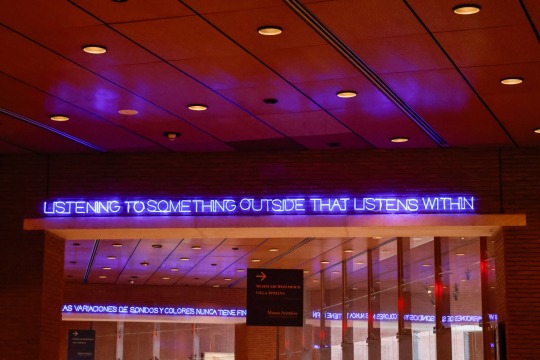





11 notes
·
View notes
Text
DAME GIOVANNA MELANDRI // POLITICIAN
“She is an Italian-American politician. She was an MP in the Italian Parliament for 18 years (1994–2012), holding the positions of Minister of Culture (1998–2001) and Minister of Youth and Sport (2006–2008). She was the president of MAXXI, the National Museum of the 21st Century Arts of Rome, until November 1st 2022. She is currently the chairwoman of the Human Foundation.”


2 notes
·
View notes
Text
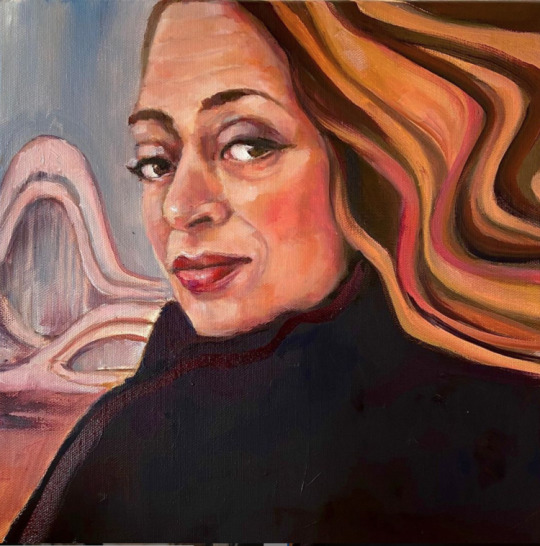
Zaha Hadid by Allison Adams
Dame Zaha Hadid (1950-2016) was an Iraqi-born British architect, known for her radical Deconstructivist designs. In 2004 she became the first woman to be awarded the Pritzker Architecture Prize, the highest honor of her field. In the early days of her career, she became known as a “paper architect,” meaning her designs were too avant-garde to move beyond the sketch phase and actually be built. This impression of her was heightened when her beautifully rendered designs—often in the form of exquisitely detailed colored paintings—were exhibited as works of art in major museums. Her major built works include the London’s Millennium Dome, the London Aquatics Centre (built for the 2012 Olympics) Michigan State University's Broad Art Museum in the US, the MAXXI Museum in Rome, and the Beijing Daxing International Airport in China. She was referred to as the "Queen of the curve", who "liberated architectural geometry, giving it a whole new expressive identity".
#zaha hadid#Allison adams#art#artwork#female portrait#architecture#architect#herstory#female artists#women artists#woman#women#irl women/girls
1 note
·
View note
Text

maxxi
71 notes
·
View notes
Note
OMG thank you I’m just so overwhelmed because there’s so much to see and eat and do in Italy.
Like I can’t even make it to Florence cinque tere or Venice on this trip.
I would loveeeee specific recs for Rome😭
ugh I know I feel like I could live a whole year in Italy and still wouldn't be enough
museums in Rome I recommend:
for Roman/ancient stuff: Trajan's Market, Baths of Diocletian/Caracalla, Palazzo Massimo,
for Modern stuff: Museum of Modern Art and the MAXXI, Palazzo Barberini
just beautiful architecture: Villa Farnesina, Tempietto, Chiostro di Bramante
Churches: Basilica of St. Lateran, Santa Maria Maggiore, San Carlo alle Quattro Fontane, Basilica di Santo Stefano Rotondo
for shopping the area around Piazza del Popolo is really good, but the restaurants there a bit pricier. If you go to St. Peter's and you exit the square along the main road and you keep going straight and cross the piazza there's some really nice restaurants there and this tiramisu place tucked in a corner that is divineeee.
#most of the food recs I have are close to the vatican bc that's where I stayed but it doesn't make sense for you to trek across town for it#u know#like there's good food everywhere really
1 note
·
View note
Text

Introduction: The Budget and Expectations Dialectic in Architectural Projects When a client begins an architectural project, they have an ideal vision of what the final building will look like, but this vision often clashes with financial reality. Client budget is the primary factor that determines the scope of the project, while expectations and demands influence architectural complexity and final costs. This article explores the relationship between architectural budget and client requirements** through historical analysis, practical examples, and hard numbers on the impacts of budget on design and implementation. 1. The role of budget in determining the scope of the project A. The impact of budget on architectural decision-making Budget affects the project at all stages, from planning to final delivery. According to a study by the Royal Institute of British Architects (RIBA), 65% of architectural projects face modifications due to budget shortfalls compared to the client’s initial expectations. Elements that directly affect the budget: - Project size: The cost of building a 250 square meter home differs from the cost of building a 500 square meter home, with costs increasing by 40-50% when the area is doubled. - Building materials: The price of natural marble used in luxury designs can range from $100 to $500 per square meter, while cheaper alternatives such as ceramics start at $10 to $50 per square meter. - Smart technologies: Adding smart home systems can increase the cost by 15-25%, according to a report by the USGBC. - Duration of implementation: The longer the project, the more operational costs increase by 5-10% per month. 2. The gap between client expectations and actual costs A. The problem of expectations conflicting with financial reality Many clients believe that they have an accurate understanding of construction costs, but the numbers prove otherwise. According to a study conducted by Harvard University of Architecture, 70% of clients budget 30% less than the actual expected costs of the project. Examples from reality: - Zaha Hadid Museum Project in Rome (MAXXI): - Initial forecast: $150 million. - Final cost: $220 million (46% increase). - Reason for increase: Structural complexities that were not initially calculated. - Berlin Brandenburg Airport Project (BER): - Planned budget: €2.8 billion. - Final cost: 6.5 billion euros (132% increase). - Reason for increase: Initial budget miscalculation. B. How does the architect contribute to adjusting expectations? Architects use techniques such as: - 3D Modeling: helps the client understand the financial impact of each design decision. - Cost-Benefit Analysis: shows the impact of each design option on the budget. - Value Engineering: to identify elements that can be replaced with cheaper alternatives without compromising quality. 3. The impact of location and geography on project budgets A. Comparison of construction costs in global cities Architectural costs vary globally, as the "Arcadis Global Construction Cost Index 2023" report shows the differences: | City | Average construction cost per square meter | - … $3,900 - $4,500 | | London | $3,200 - $3,800 | | Dubai | $1,800 - $2,200 | | Shanghai | $1,400 - $1,700 | | Cairo | $600 - $900 | B. Impact of Inflation and Material Costs - Global construction material prices increased by 25% in 2022 due to supply chain issues. - In the US, the price of steel used in towers increased by 30% between 2020 and 2023. - In the Middle East, the cost of concrete increased by 18% in the last five years due to rising energy prices. 4. Challenges facing clients in managing their budgets A. Unforeseen Cost - 10-15% of the budget is often consumed by unplanned expenses, such as higher material costs or design changes. - Contractors typically add 5-7% of the cost as a contingency. B. Schedule Overruns and Their Financial Impact - A project delay of 6 months can increase the cost by 10-12% due to higher labor costs and rental equipment costs. - In large infrastructure projects, delays can reach 40% of the original budget as was the case with the California High Speed Rail project. 5. Successful Budgeting and Forecasting Strategies A. Early Financial Planning - Consult a financial expert before the project begins to determine the budget ceiling. - Conduct an early financial feasibility study to identify the most costly elements of the project. B. Smart negotiation with suppliers and contractors - Bulk purchasing can reduce costs by 10-15%. - Integrated contracts with contractors ensure control over potential additional costs. C. Design flexibility - Utilizing alternative materials without compromising quality. - Choosing sustainable building systems that save long-term costs. How to balance client budget and expectations? Success in architectural projects depends on achieving a delicate balance between budget, expectations, and quality of execution. Through careful planning, expert consultation, and the use of modern cost estimation tools, architects and engineers can help clients avoid the gap between dream and financial reality. The basic equation for success: "Realistic expectations + smart financial planning + collaboration with architects = successful project within budget." If costs are managed wisely, high-quality projects can be achieved without unforeseen financial overruns. Read the full article
0 notes